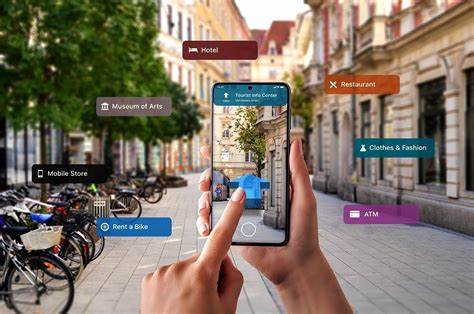Adding augmented reality (AR) features to your website and app can enhance user engagement, provide interactive experiences, and create a unique selling point for your products or services. Here’s a step-by-step guide on how to integrate AR into your website and mobile app:

Table of Contents
Toggle1. Define the Purpose of AR Integration
Identify Use Cases
Determine how AR can benefit your users. Common use cases include:
- Product Visualization: Allowing customers to see how products look in their environment (e.g., furniture, clothing).
- Interactive Experiences: Providing engaging content that enhances storytelling or educational material.
- Gamification: Creating fun, interactive experiences that encourage user participation.
Set Goals
Establish clear objectives for implementing AR features. These might include increasing user engagement, boosting sales, or enhancing user satisfaction.
2. Choose the Right AR Technology
Web-Based AR
For websites, consider using web-based AR solutions that require no app installation. Technologies include:
- WebAR: Use frameworks like AR.js or A-Frame to create AR experiences directly in web browsers.
- 3D Model Viewers: Implement libraries like Three.js to display 3D models that users can interact with.
Mobile AR SDKs
For mobile apps, use AR Software Development Kits (SDKs) such as:
- ARKit: Apple’s framework for iOS devices, allowing for high-quality AR experiences.
- ARCore: Google’s platform for building AR applications on Android devices.
- Vuforia: A versatile SDK that works on multiple platforms and provides robust tracking capabilities.
3. Design the AR Experience
Create 3D Models
Develop or source 3D models for your AR experiences. Ensure they are optimized for performance, balancing quality and file size. Tools for creating 3D models include Blender, Maya, or Tinkercad.
User Interface Design
Design an intuitive user interface (UI) for the AR experience. Make sure the controls are easy to understand, and provide clear instructions on how to interact with the AR features.
Testing and Iteration
Prototype your AR features and conduct user testing. Gather feedback to improve usability and ensure that the experience is engaging and intuitive.
4. Implement AR Features
Integrate AR SDKs or Libraries
Follow the documentation of your chosen AR SDK or library to integrate AR capabilities into your app or website. This may involve setting up project files, including necessary libraries, and writing code to create AR functionalities.
Develop Key Features
Implement key AR features, such as:
- Image Recognition: Enabling users to point their device at a specific image to trigger an AR experience.
- Object Placement: Allowing users to place 3D objects in their real-world environment using device cameras.
- Animations and Interactions: Adding animations and interactive elements to make the AR experience engaging.
5. Optimize for Performance
Test on Multiple Devices
Test the AR features on various devices to ensure compatibility and performance. This helps identify any issues that may arise on different hardware.
Optimize Asset Sizes
Compress 3D models and textures to minimize load times and improve performance. Use techniques like Level of Detail (LOD) to adjust the model quality based on the user’s distance from the object.
Reduce Latency
Ensure smooth interactions by optimizing the AR experience for low latency. This can include reducing the complexity of 3D models and optimizing rendering techniques.
6. Launch and Promote Your AR Features
Beta Testing
Before launching, conduct beta tests with a select group of users to gather feedback and identify any issues.
Marketing Campaign
Promote your new AR features through marketing campaigns. Use social media, email newsletters, and website banners to inform users about the new functionality.
Engage Users
Encourage users to try out the AR features by providing tutorials, demos, or incentives. Highlight the unique benefits of the AR experience to increase user adoption.
7. Analyze and Improve
Track User Engagement
Use analytics tools to monitor user engagement with the AR features. Track metrics such as user interactions, session duration, and conversion rates to evaluate the effectiveness of the AR experience.
Gather User Feedback
Continuously collect feedback from users to identify areas for improvement. Use surveys, feedback forms, and user interviews to gather insights on the AR experience.
Iterate and Enhance
Based on user feedback and analytics data, make necessary adjustments to improve the AR experience. This may include adding new features, optimizing performance, or enhancing the UI.
Conclusion
Adding augmented reality features to your website and app can significantly enhance user engagement and create memorable experiences. By defining clear objectives, choosing the right technology, designing user-friendly interfaces, and continuously iterating based on feedback, you can effectively integrate AR into your digital platforms. As AR technology continues to evolve, staying updated with the latest trends and tools will enable you to provide innovative experiences that captivate your audience.


No responses yet